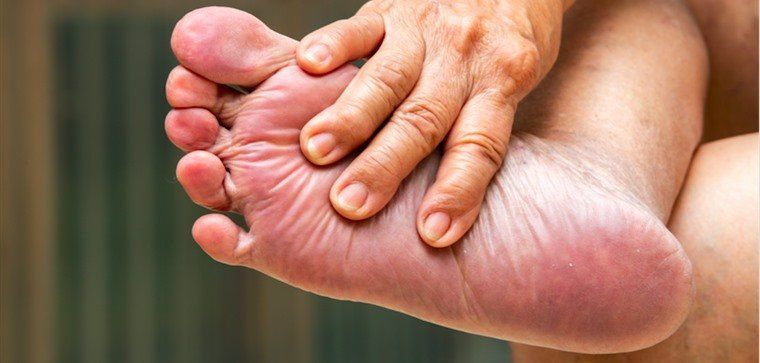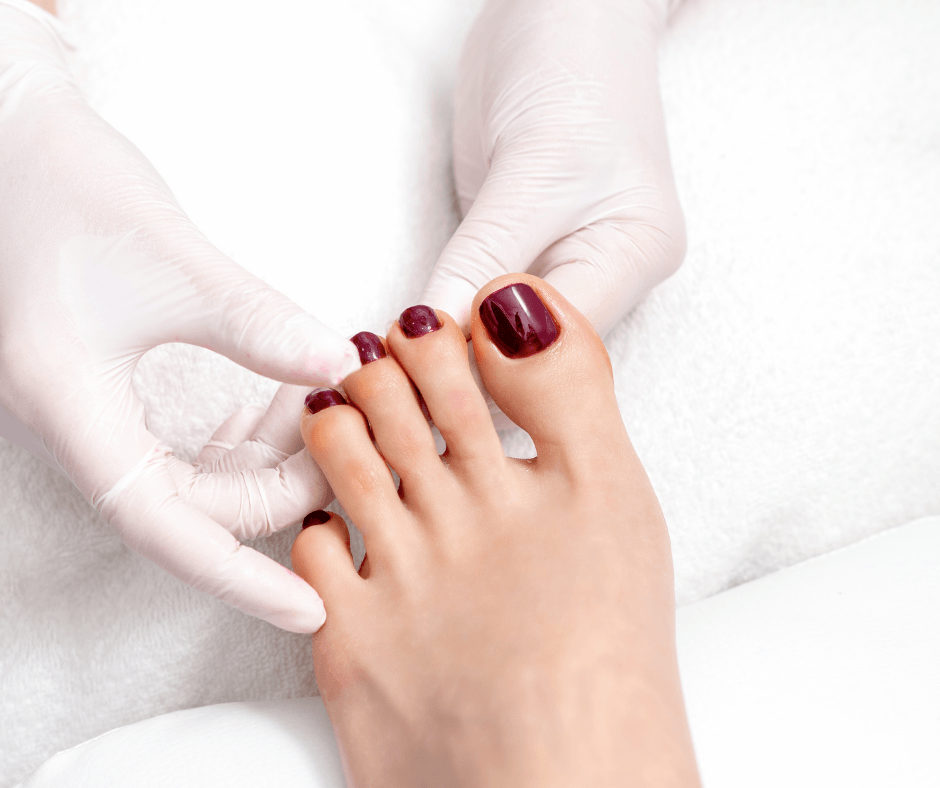Silent Killers

A man in his early 20s came to see me last week. He was concerned because he had discovered a purple hue and rough texture on the bottom of both feet. It was a surprise to him when I said he needed to stop smoking. His feet were reflecting a problem with circulation that is certain to get worse unless he makes some lifestyle changes. Continuing to smoke would have a strong likelihood of unpleasant consequences.
At the risk of sounding melodramatic, there are two silent killers that in combination threaten not only the limbs but the lives of hundreds of thousands of people. Those two diseases are diabetes and smoking. I do consider addiction to nicotine to be a disease state. Individually and especially in combination, they are too often lethal. Overcoming this addiction is difficult I know, as I was once a smoker myself. But the benefits of quitting are nothing short of amazing for your overall health and critical for your feet.
When it comes to foot health, circulation is a key issue. Peripheral vascular disease is the medical name given to a group of problems that cause poor circulation to the feet and legs. The most common cause of peripheral vascular disease is atherosclerosis (hardening of the arteries) where there is a gradual thickening of the walls of the arteries. And the number one cause of micro vascular disease is diabetes.
But you may not have known smoking is the number one accomplice. In fact, smoking is one of the biggest threats to the health of your feet, because it affects the small blood vessels; constricting them much as diabetes does. Smoking causes decreased blood flow to the feet and all parts of the body, making wounds heal more slowly. A lot of people with diabetes who ultimately need amputations are smokers. I’ve seen that correlation consistently and repeatedly over many years in our practice.
In fact, many podiatrists are reluctant, and often refuse, to do needed surgery on smokers who are unwilling to quit, because their prognosis is generally so poor. Poor circulation means poor flow of the vital ingredients in the blood needed for healing. That translates into surgical wounds that heal more slowly or, perhaps in severe cases, not at all. And, the prospect of infection increases dramatically. Nicotine is the culprit. It is a toxic and addictive substance that causes vasoconstriction of blood vessels. When nicotine is present in the body, blood vessels close down or get smaller, decreasing the amount of blood flowing to the surgical site.
Smokers who quit can reap almost immediate rewards. Our bodies are always attempting to overcome our bad habits and guide us to health, and they’re always trying to repair damage from smoking. Studies show that within minutes of finishing a cigarette, the body begins a number of health-giving changes. The American Lung Association reports that within 24 hours of quitting, the chance of a heart attack decreases, and within 48 hours of quitting, nerve endings start to improve and re-grow and the ability to taste and smell is enhanced. Carbon monoxide levels decrease rapidly allowing oxygen to be carried by red corpuscles to the tissues.
Two weeks to three months after quitting, circulation improves, walking becomes easier, and lung function increases. Between one month and nine months later, coughing, sinus congestion, fatigue, and shortness of breath decrease. One to five years out, the risk of coronary heart disease decreases by half, and stroke risk is the same as for non-smokers. At the 10-year mark, the risk of lung cancer is half that of continuing smokers, and the risk of other cancers decreases, as well, as does the risk of ulcers.
There are a variety of foot health issues that relate, directly or indirectly, to diabetes, poor circulation, and smoking. Heading the list is neuropathy, which is nerve damage that lessens ability to feel pain, heat, and cold. With loss of sensation, foot injuries are not always discovered promptly, increasing the chance of infection. That is the sequence at the heart of many amputations.
Diabetes also often causes changes in the skin of the foot, which may become very dry, peel, and crack. Nerves that control the oil and moisture in the foot are impaired. Calluses can be another problem. They occur more often and build up faster on the feet of people with diabetes. If not trimmed, calluses get very thick, break down, and turn into ulcers.
It is fundamental and essential for people with diabetes in whatever form, from mild and severe, to have an ongoing relationship with a podiatrist to offset the possibilities of severe foot health problems. Managing diabetes effectively is a team effort. You are not alone, we’re here for you.
I say this every time I write, when you come in to see any of our doctors at Central Carolina Foot and Ankle, we’re going to listen to you first, then closely examine your feet, probably watch you walk, obtain x-rays or other diagnostic tests, and then explain to you what we think the problem is and how we think we can resolve it. We want you to understand why you have foot pain and we want the treatment plan to make sense to you. Because educated, informed patients usually do what it takes to get well. We figure we are in this together.
It you are experiencing pain while walking or other problems with your feet please call our office (919)477-9333 and let us help you start working on the solution!



